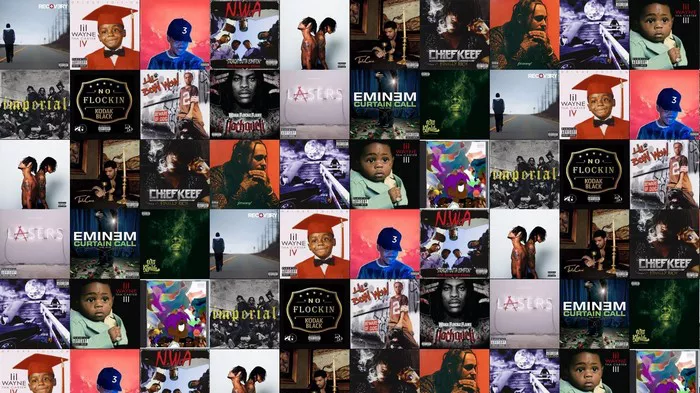When it comes to rap music, the beat is often the heartbeat of the song. It sets the tone, provides the rhythm, and creates the foundation upon which the lyrics are built. Whether you’re an aspiring producer or an artist looking to create your own beats, understanding what you need to make rap beats is crucial for achieving that distinctive sound that characterizes the world of rap. In this comprehensive guide, we will delve into the essential tools and techniques required to craft compelling rap beats that capture the essence of rap music.
1. The Digital Audio Workstation (DAW)
At the core of any rap beat production is a Digital Audio Workstation, or DAW. The DAW is the virtual workspace where all the elements of your beat come together. For rap music production, choosing the right DAW is crucial. Popular DAWs like Ableton Live, FL Studio, Logic Pro X, and Pro Tools offer a wide array of features tailored to rap music production.
When selecting a DAW, consider your budget, workflow preferences, and the specific features that cater to rap music production. Most DAWs come with built-in instruments and effects that can help you shape your beats, but you can also expand your toolkit with virtual instruments and plugins specifically designed for rap music production.
2. Drum Samples and Sequencing
The backbone of any rap beat is the drum pattern. The drums provide the rhythm and groove that drives rap music. To create an authentic and compelling rhythm, you need high-quality drum samples and a solid understanding of sequencing.
Start by collecting a diverse library of drum samples, including kicks, snares, hi-hats, and percussion. These samples should be tailored to rap music, with a focus on punchy kicks and crisp snares. Many producers also layer multiple drum samples to create unique and dynamic sounds.
Sequencing is where you arrange your drum samples to create a beat. In most DAWs, you can use a piano roll or step sequencer to program your drum patterns. Experiment with different patterns and rhythms to find the groove that fits your rap music track.
3. Melodic Elements and Sampling
While drum patterns are fundamental to rap music, melodic elements add depth and emotion to your beats. Producers often use samples from various sources to create melodies and harmonies. Sampling can be a creative and distinctive way to infuse your beats with character.
When sampling, make sure to clear any copyright issues and respect intellectual property rights. Some producers use royalty-free sample packs or create their melodies using virtual instruments like synthesizers and pianos. Experiment with different sounds and melodies to find the right vibe for your rap music.
4. Basslines and 808s
The low-end frequencies are critical in rap music. A powerful bassline or booming 808 can give your beat that signature thump and energy. To create impactful basslines, you’ll need to work with dedicated bass samples or synthesize your bass using virtual instruments.
Experiment with different bass patterns and rhythms to find the groove that complements your drums and melodies. In many cases, sidechain compression is used to make the bass and kick drum work together seamlessly, ensuring that the rhythm of your rap music beat remains tight.
5. Arrangement and Song Structure
Creating a compelling arrangement is essential in producing a complete rap music beat. Consider the structure of your beat, including the intro, verses, chorus, and bridge. The arrangement should support the lyrics and flow of the rap.
In rap music, the beat often leaves space for the vocals, allowing the lyrics to take center stage. Be mindful of the arrangement’s dynamics, adding variation to keep the beat interesting while leaving room for the rapper to shine.
6. Mixing and Sound Design
Mixing is the process of balancing and enhancing the individual elements of your rap music beat. Proper mixing ensures that each instrument is clear and that the beat sounds cohesive and professional.
Pay attention to EQ, compression, reverb, and other effects to shape the sound of your elements. Experiment with panning to create a wide stereo image. Mixing is an art in itself, so take the time to learn and refine your skills to achieve the best sound for your rap music beats.
7. Collaboration and Feedback
Collaboration is a significant aspect of rap music production. Collaborating with vocalists, other producers, or musicians can bring fresh ideas and perspectives to your beats. It’s essential to be open to feedback and willing to make adjustments based on the input of others.
Working with vocalists is particularly important in rap music production. Building a rapport with rappers and understanding their style and lyrical content can help you create beats that perfectly complement their performance.
8. Finalizing Your Rap Beats
Once your rap beat is complete, it’s essential to finalize it for distribution. This includes mastering, which is the process of optimizing the overall sound and loudness of your track. Mastering ensures that your rap music beat is consistent and ready for release on streaming platforms or for use in recordings.
Consider collaborating with a mastering engineer or using mastering software to achieve a professional sound. Pay attention to metadata and file formats to ensure your beat is correctly labeled and ready for distribution.
Conclusion
In the world of rap music, the beat is a crucial element that defines the mood, style, and energy of a song. To create authentic and compelling rap beats, you need the right tools, including a suitable DAW, high-quality drum samples, melodic elements, and a strong understanding of arrangement, mixing, and mastering. Collaboration and openness to feedback are also essential to fine-tune your beats to perfection. With dedication and creativity, you can craft rap beats that resonate with listeners and contribute to the vibrant world of rap music.

